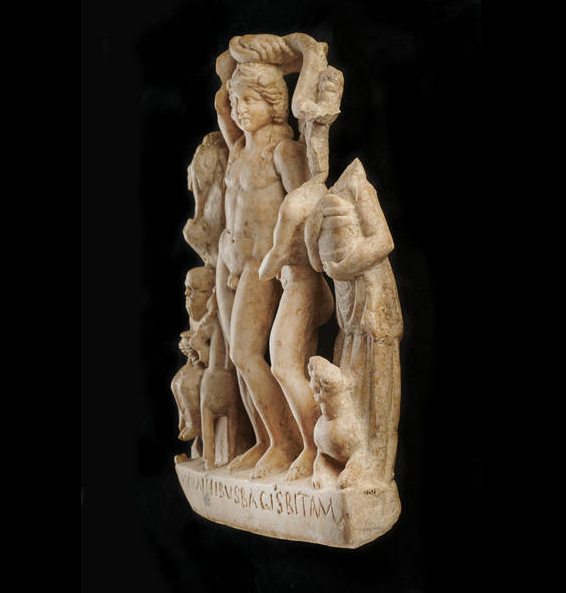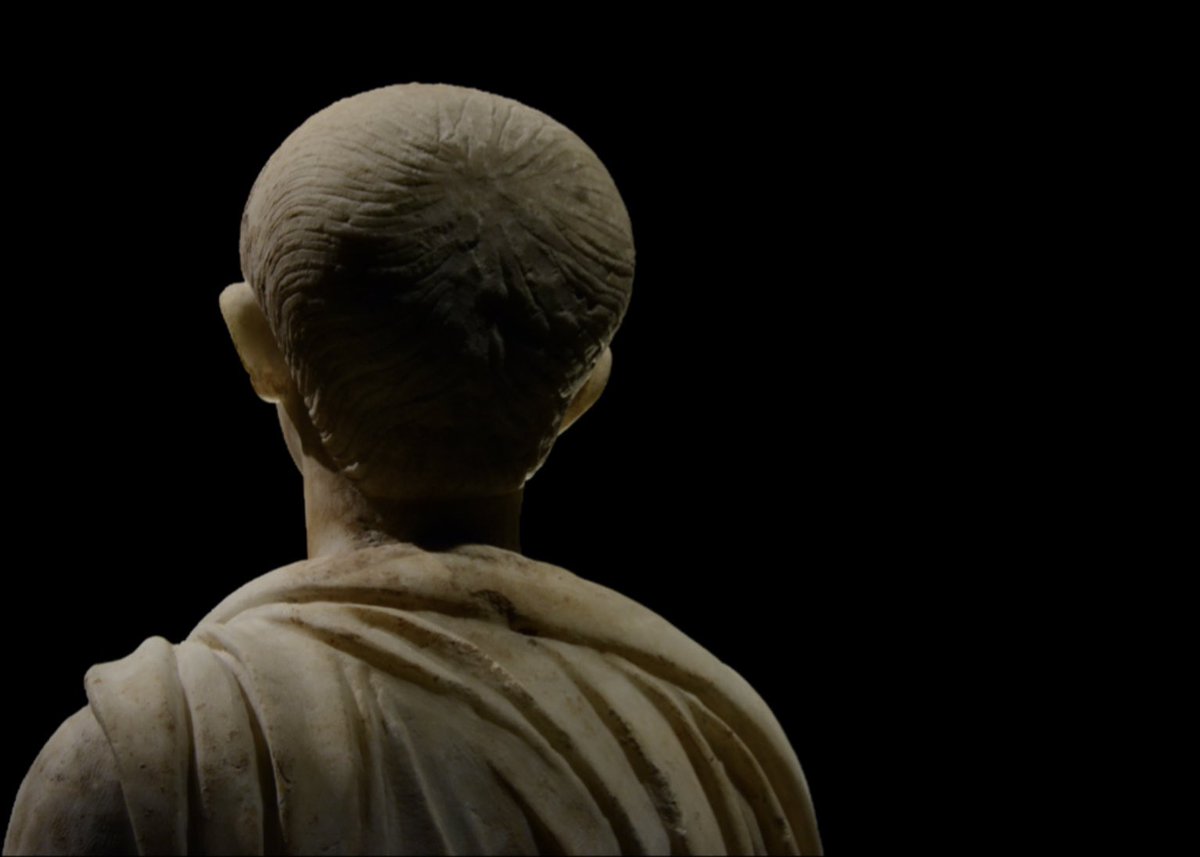Discover and read the best of Twitter Threads about #EpigraphyTuesday
Most recents (20)
#EpigraphyTuesday A hole new world. For many visitors, a trip to the Roman Forum often begins with a spectacular monument (15.4 X 13.5m): the Arch of Titus. It's beautifully inscribed: you can still see the holes where bronze letters were embedded to sparkle in the Sun.🧵1/7
📷Me
📷Me

#EpigraphyTuesday – The rather magnificent tombstone of Longinus Sdapeze, a member of ‘ala I Thracum’, a unit which may have played a role in the Claudian invasion of Britain AD 43. #Latin 🧵
Image: Colchester & Ipswich Museums (COLEM:1928.345). Link – cim-web.adlibhosting.com/ais6/Details/c…
Image: Colchester & Ipswich Museums (COLEM:1928.345). Link – cim-web.adlibhosting.com/ais6/Details/c…

Discovered in 1928 and showing evidence of ancient damage, including the break across the main inscription panel, the actual head of Longinus was not found until subsequent excavations in 1996.
#EpigraphyTuesday It's my birthday, so here is one of my favourite inscriptions, still in situ, leading onto Tiber Island: the Pons Fabricius (62 BCE). The oldest bridge in Rome is 62m x 5.5m with 2 arches 24m wide in lovely travertine; built to last! #Roman #Archaeology 1/5
📷Me
📷Me

The bridge, beautifully drawn by Piranesi (1756) was reworked by consuls after a flood (21 BCE) (Dio 53.33.5). A central chamber with a stone prow let high waters to pass: illustrating the innovative technology behind Rome's majestic architecture 2/5
📷metmuseum.org/art/collection…
📷metmuseum.org/art/collection…

#EpigraphyTuesday – something different today with the so-called ‘Tabula Rondanini’, an example of the ‘Tabulae Iliacae’, where scenes from the Trojan Cycle are depicted: ca. 1st Century AD. #Myth
Image: National Museum, Warsaw (147975 MNW). Link - cyfrowe.mnw.art.pl/en/catalog/611…
Image: National Museum, Warsaw (147975 MNW). Link - cyfrowe.mnw.art.pl/en/catalog/611…

These tablets – some 22 are known – were long dismissed as being intended for “a clientèle unacquainted with Homer himself” (Horsfall, 1979: 34), seen as the type of object appreciated by characters such as Petronius’ Trimalchio. However, more recent work has questioned this.
#EpigraphyTuesday Spring has Sprung!🌷 This delicately punched piece of copper alloy, 8cm (ca. the width of a credit card) shows how #Roman soldiers on Hadrian's wall measured the passing seasons.
But what is it? 🧵1/4
🏛️📷 @VindolandaTrust
But what is it? 🧵1/4
🏛️📷 @VindolandaTrust

@VindolandaTrust @DocCrom @roamintheempire @AncientRomeLive @TheClassicalCo Answer: We're not entirely sure. It was probably part of a larger ring (ca. 35cm in total), which roughly labelled the days (K), weeks (N), mid-month (Id) & the equinox (Ae). Some suggest that it was a clock, others a calendar... 2/4
📷Labels added.
cambridge.org/core/journals/…
📷Labels added.
cambridge.org/core/journals/…

@VindolandaTrust @DocCrom @roamintheempire @AncientRomeLive @TheClassicalCo Found in a granary, it could have helped to time night watches, but the precious timepiece was likely in the principia (headquarters), used as a celestial calendar (horologium) or an anaphoric clock. This image of control was also in Rome: showing the same equinox (in Greek) 3/4. 

Este pasado verano tuve la oportunidad de visitar el MASMO (Museu Arqueológico de S. Miguel de Odrinhas) en Sintra (Portugal), que contiene una interesante colección epigráfica.
¿Os apetece ver alguna pieza?
#PequeñasPerlasDeEpigrafía
#EpigraphyTuesday
¿Os apetece ver alguna pieza?
#PequeñasPerlasDeEpigrafía
#EpigraphyTuesday

L(ucius) AELIVS L(ucii) F(ilius) GAL(eria tribu) AELIANVS H(ic) S(itus) E(st)
L(ucius) AELIVS SEX(ti) F(ilius) GAL(eria tribu) SENECA PATER H(ic) S(itus) E(st)
CASSIA Q(uinti) F(ilia) QVINTILLA MATER H(ic) S(ita)
E(st)
▶️
L(ucius) AELIVS SEX(ti) F(ilius) GAL(eria tribu) SENECA PATER H(ic) S(itus) E(st)
CASSIA Q(uinti) F(ilia) QVINTILLA MATER H(ic) S(ita)
E(st)
▶️

▶️
L(ucius) IVLIVS L(ucii) F(ilius) GAL(eria tribu)
AELIANVS ANN(orum) XIIII H(ic) S(itus) E(st)
L(ucius) IVLIVS L(ucii) F(ilius) GAL(eria tribu)
IVLIANVS AN(norum) XXV H(ic) S(itus) E(st)
AELIA L(ucii) F(ilia) AMOENA H(ic) S(ita) E(st)
📸H.Ep. 21320
L(ucius) IVLIVS L(ucii) F(ilius) GAL(eria tribu)
AELIANVS ANN(orum) XIIII H(ic) S(itus) E(st)
L(ucius) IVLIVS L(ucii) F(ilius) GAL(eria tribu)
IVLIANVS AN(norum) XXV H(ic) S(itus) E(st)
AELIA L(ucii) F(ilia) AMOENA H(ic) S(ita) E(st)
📸H.Ep. 21320
Para el #PequeñasPerlasDeEpigrafía de hoy traigo la inscripción de un legionario con problemas legales para reconocer a su familia. Atentos a la historia de Marco Septicio.
#EpigraphyTuesday
#EpigraphyTuesday

M(arcus) SEPTICIVS C(ai) F(ilius) PAP(iria)
AQVILIFER SIBI ET SABINAE
CONTVBERNALI SVAE ET M(arco) SEPTICIO
M(arci) LIB(erto) MARTIALI FILIO NATVRALI AN(norum) X
ET MENSVM VII
H(ic) S(iti) S(unt) S(it) V(obis) T(erra) L(evis)
POST EORVM OBITVM
HOC MONIMENTVM HEREDEM
NON SEQVETVR
AQVILIFER SIBI ET SABINAE
CONTVBERNALI SVAE ET M(arco) SEPTICIO
M(arci) LIB(erto) MARTIALI FILIO NATVRALI AN(norum) X
ET MENSVM VII
H(ic) S(iti) S(unt) S(it) V(obis) T(erra) L(evis)
POST EORVM OBITVM
HOC MONIMENTVM HEREDEM
NON SEQVETVR
#EpigraphyTuesday🧵– The Insus Tombstone
Discovered in 2005, this inscription and relief sculpture served as the tombstone for a Roman auxiliary cavalry soldier: ca. Late 1st Century AD. #Roman
Image: Lancaster City Museum. Link - lancashiremuseumsstories.wordpress.com/2021/02/12/the…
Discovered in 2005, this inscription and relief sculpture served as the tombstone for a Roman auxiliary cavalry soldier: ca. Late 1st Century AD. #Roman
Image: Lancaster City Museum. Link - lancashiremuseumsstories.wordpress.com/2021/02/12/the…

The piece is a fine example of the ‘Reiter’ (‘Rider’) style of monument, with a representation of a mounted soldier. Standing some 2.25m high, the overall piece is both impressive and energetic.
#EpigraphyTuesday - The Water Newton bowl, a silver Romano-British bowl, ca. 4th Century AD, bearing a rather fabulous little Christian inscription. #Latin #Inscription
Image: British Museum (1975,1002.5). Link – britishmuseum.org/collection/obj…
Image: British Museum (1975,1002.5). Link – britishmuseum.org/collection/obj…

Discovered in 1975 as part of a collection of precious metal items – the Water Newton Hoard – which included elements decorated with Christian symbols, including the 'feather-plaques', though these forms are also found in non-Christian contexts. 

The bowl bears an inscription of the name 'Publianus' on its base and the following inscription around its rim:
SANCTUM ALTARE TUUM DOMINE SUBNIXUS HONORO
SANCTUM ALTARE TUUM DOMINE SUBNIXUS HONORO
Peekabo! Examples of epitaphs in situ in the catacombs of #Rome (examples are from Catacomb of Priscilla, open to the public). In 3 cases, hidden behind later retaining piers; last one is painted on wall of a chamber within a tabella ansata. Source: ICS, #DAPICS #EpigraphyTuesday 



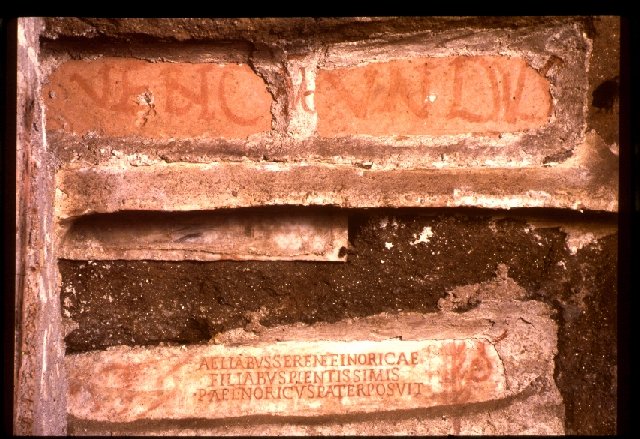

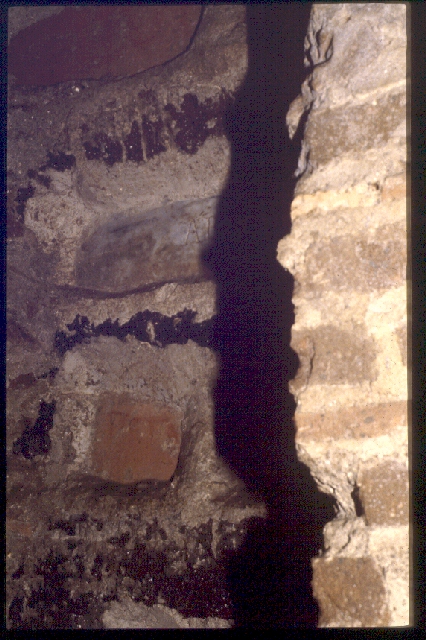

more frequently, epitaphs & other funerary artifacts in catacomb settings secured in modern displays - first & foremost, so that they stay there. Displays tend to be clustered in accessible areas so that you & I can see them. All catalogued in @EdbUniba. #EpigraphyTuesday 







examples I've shared are older, grimier versions of many epitaphs on marble, which have since been cleaned & documented in better lighting than a flashlight beam. Virtually all found in disturbed context, making it necessary to remount them, often thematically #EpigraphyTuesday 







#EpigraphyTuesday – The Foss Dyke Mars: a statuette of Mars, nude apart from his rather flamboyant helmet: found on the course of the Foss Dyke in 1774, though the original find-spot is not specified. #Roman #Mars
Image: British Museum (OA.248). Link - britishmuseum.org/collection/obj…
Image: British Museum (OA.248). Link - britishmuseum.org/collection/obj…

This ca. Late 2nd – Early 3rd Century copper-alloy figure is well executed, highlighting once again the popularity of Mars as a Romano-British cult focus, as shown in other artefacts such as the Barkway Plaque.
#EpigraphyTuesday - A cracking piece today, with the bronze tablets preserving elements of Claudius' speech to the Senate in AD 48 on admitting Gauls to the Senate.
Image: Lugdunum Museum (AD012); ILS 212. Link - lugdunum.grandlyon.com/fr/Oeuvre/1209…
Image: Lugdunum Museum (AD012); ILS 212. Link - lugdunum.grandlyon.com/fr/Oeuvre/1209…

Discovered in 1528, the bronze panels record Claudius' response to a request from the leading citizens of Gallia Comata that they should be allowed to hold public office in Rome.
Another quick #EpigraphyTuesday thread with this funerary inscription for the daughter of Blescius Diovicus. #Roman
Image: Museum of Archaeology & Anthropology, Cambridge (D 1970.11). Link - collections.maa.cam.ac.uk/objects/468494
Image: Museum of Archaeology & Anthropology, Cambridge (D 1970.11). Link - collections.maa.cam.ac.uk/objects/468494

The inscription was discovered prior to 1601 in Risingham, the site of the Roman fort of Habitancum, on Dere Street - which ran from York to Corbridge.
A quick #EpigraphyTuesday thread to get my day going, with this dedicatory statue group of Dionysus from the Mithraeum in London: ca. 4th Century AD. #Roman
Image: Museum of London (18496). Link - collections.museumoflondon.org.uk/online/object/…
Image: Museum of London (18496). Link - collections.museumoflondon.org.uk/online/object/…

#EpigraphyTuesday - a second piece spotted on my Edinburgh jaunt, with this relief dedication to the goddess Brigantia, from Birrens: ca. Mid-Late 2nd Century AD. #Roman
Image: National Museum of Scotland (X.FV 5). Link - nms.ac.uk/explore-our-co…
Image: National Museum of Scotland (X.FV 5). Link - nms.ac.uk/explore-our-co…

Inscription:
"Brigantiae s(acrum) Amandus
arc(h)itectus ex imperio imp(eratum) (fecit)"
Translation:
'Sacred to Brigantia: Amandus, the engineer, by command fulfilled the order'
"Brigantiae s(acrum) Amandus
arc(h)itectus ex imperio imp(eratum) (fecit)"
Translation:
'Sacred to Brigantia: Amandus, the engineer, by command fulfilled the order'

The damage to the text of the inscription has led to some speculation about its reconstruction: an alternative reading of the damaged section could be "ex imperio ipsius" - 'by command of the goddess herself'.
#EpigraphyTuesday - spotted on my recent Edinburgh rambling, a lovely little altar dedicated to Mercury from Castlecary ca. AD 140-190. #Roman
Image: National Museum of Scotland (X.FV 32). Link - nms.ac.uk/explore-our-co…
Image: National Museum of Scotland (X.FV 32). Link - nms.ac.uk/explore-our-co…

#EpigraphyTuesday - Kicking off with a bit of Nero and Poppaea graffiti from Pompeii, with these verse inscriptions from the House of Gaius Julius Polybius (IX.13.1-3). #AGOTD #Graffiti
Image: Authors photograph of Année Epigraphique (1985) 283 and 204 (2004: 404)
Image: Authors photograph of Année Epigraphique (1985) 283 and 204 (2004: 404)

The inscriptions themselves would seem to commemorate gifts offered by Poppaea and Nero to the goddess Venus, perhaps at the time of the emperor's visit to Pompeii in AD 64. 

The first records a gift of Poppaea:
"munera Poppaea misit Veneri sanctissimae berullum helenumque / unio mixtus erat"
'Poppaea sent as gifts to most sacred Venus a beryl, an ear-drop pearl - oh, and a bloody big pearl besides!'
"munera Poppaea misit Veneri sanctissimae berullum helenumque / unio mixtus erat"
'Poppaea sent as gifts to most sacred Venus a beryl, an ear-drop pearl - oh, and a bloody big pearl besides!'
You cannot have a #NeroExhibition without the back story. Cue Augustus (and his swooshy locks), Caligula (and his cute eyelashes) and a few of the other Julio-Claudians before we meet the protagonist: Nero. #NeroExhibition 







From a curtain fringe to full on foppish curls (and a fuller chin) #NeroExhibition 







#Roman inscriptions can make history individual and personal. Many are not merely an abstract description, but rather a close encounter with the everyday life of the people of that time. A good example can be found in this votive altar: 1/5
#EpigraphyTuesday #RomanArchaeology

#EpigraphyTuesday #RomanArchaeology


It was set up by the merchant Lucius Licinius Divixtus for the Boni Casses, fulfilling a vow after he survived a shipping accident. The Boni Casses were probably Celtic or Germanic deities, who were supposed to protect travellers. 2/5
IN H(onorem) D(omus) D(ivinae)/BONIS CASSIBV[S]/EO QVOD POS[T]//SVMMERSAMM/BON(a)E SALVT[I]/SIT REDDITV[S]/ET SVI(s) L(ucius) LICINIV[S]/DIVIXTV[S]/NEGOTIATO[R]/EX VOTO POSV(it)/ABBINO/ET MAXIMO/CO(n)S(ulibus) L(aetus) L(ibens) M(erito) 3/5
Oh, sod it... I can't stay non-ancient all day, so for an #EpigraphyTuesday thread here's a very quick little offering.
So here's a bronze Etruscan helmet that was dedicated in the sanctuary of Zeus at Olympia.
Image: British Museum (1823,0610.1)
So here's a bronze Etruscan helmet that was dedicated in the sanctuary of Zeus at Olympia.
Image: British Museum (1823,0610.1)
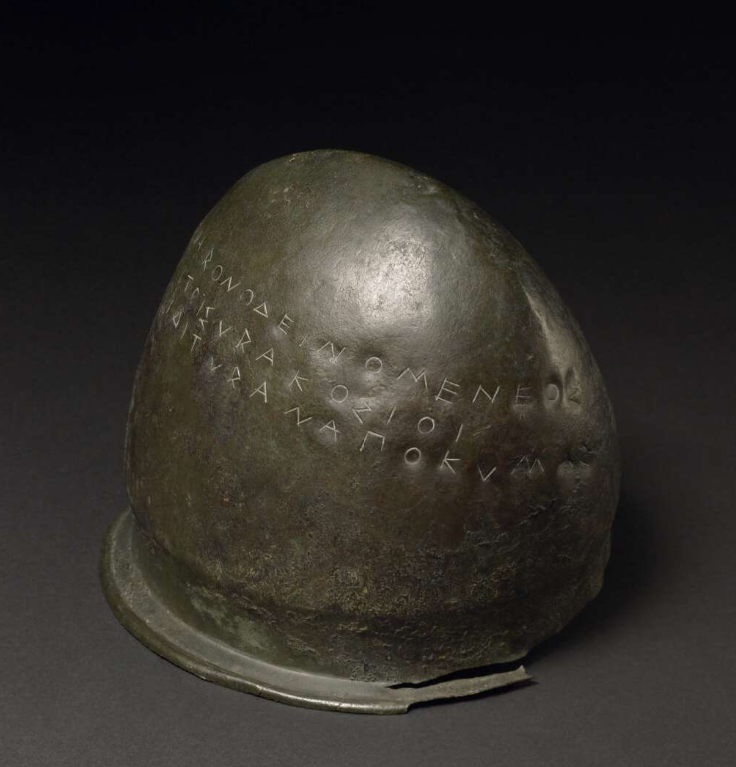
The piece is thought to be a trophy dedicated at the sanctuary in the aftermath of the Battle of Cumae in 474 BC, where the Syracusans under Hieron defeated the Etruscans.











